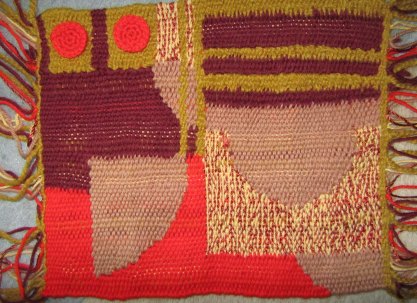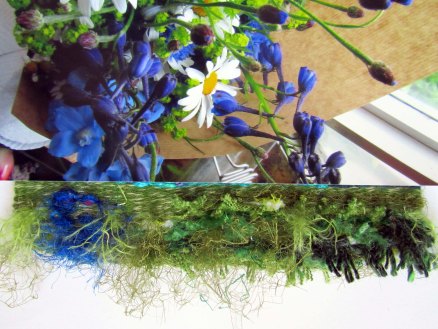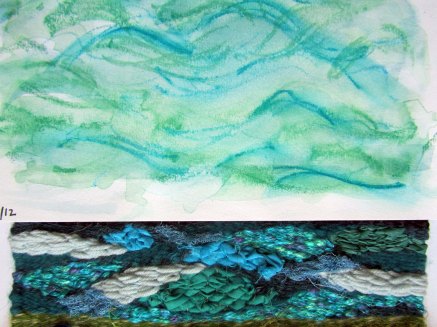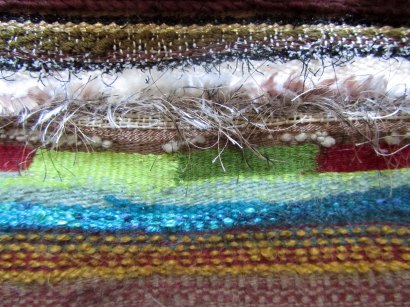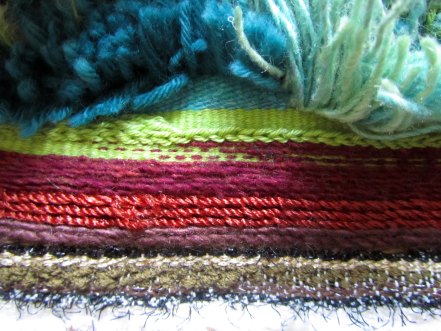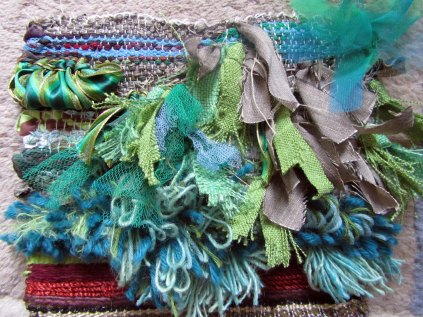I recently had a weekend in London, and got to see Grayson Perry’s Walthamstow Tapestry at the newly refurbished William Morris Gallery. The visit fitted really well into this assignment as I have written research points on both men.
This tapestry was the first of his large scale tapestries completed in 2009. It has been woven on a computerised Jacquard loom, meaning that the massive 15m long piece can be completed in one and a half days! Tapestry would not be a very practical medium for Perry if such technology were not available, as the content is so politically satirical, it is immediately relevant to life today.
I spent an age looking at this work as the more you look, the more detail you see. The first this that strikes you about it is that it looks incredibly colourful, but on closer insepction the colour palette is actually very narrow. The way that the piece is displayed on a curved wall works very well, as there are parallels between the start and finish of the narrative. We have birth at one end on a simple quilt, and death at the other on a second quilt design. The river of blood runs around the top, and the yellow brick road around the bottom. The thought processes were all set out on the written panel accompanying the exhibition, but the themes were quite easy to follow without this. The edges of the tapestry are drawn in a freehand and loose style which is characteristic of Perry’s tapestries.
The tapestry is littered with age-relevant trade names and observational depictions of modern life, but any perception of prejudice comes from the viewer and what they project onto the work. I wondered if this was another reason that the piece seems so colourful, as we imagine all the trademarks and logos jumping out from the wall. Floral motifs are dotted across the tapestry, a nod to William Morris and a device to mirror the health of the subject as they move through life. We even have fleur-de-lis urinary incontinence near the end.
One thing I did notice was a wrinkling of the tapestry that looked like sagging of large blocks of one colour. I think that this is always going to be a problem when large areas of one colour are used as I think it is owven like a double cloth, and the colour changes anchor the top layer to the back.
The rest of the museum is well worth a visit, and it was lovely to have the things I had previously written about illustrated with the actual artefacts. Seeing a recreation of the Morris and Co showroom was a particular treat.
During the weekend, I also made time to visit a few other exhibitions. Spare Parts at the Rag Factory was about prosthetic limbs, half of the space devoted to new technologies and designs and the other half was art incorporating discarded prostheses. The Wellcome Trust had an exhibition called ‘Superhuman’ about human augmentation in general, and another ‘Medicine Today’ which was an interesting mix of art, design and medical sciences.




